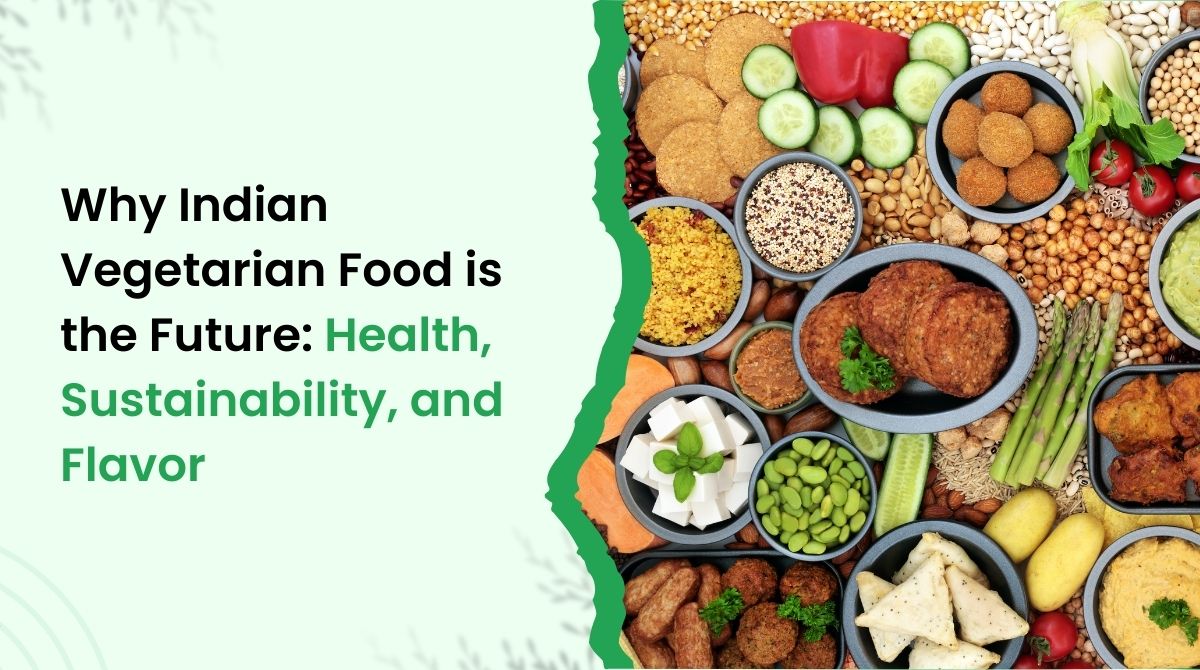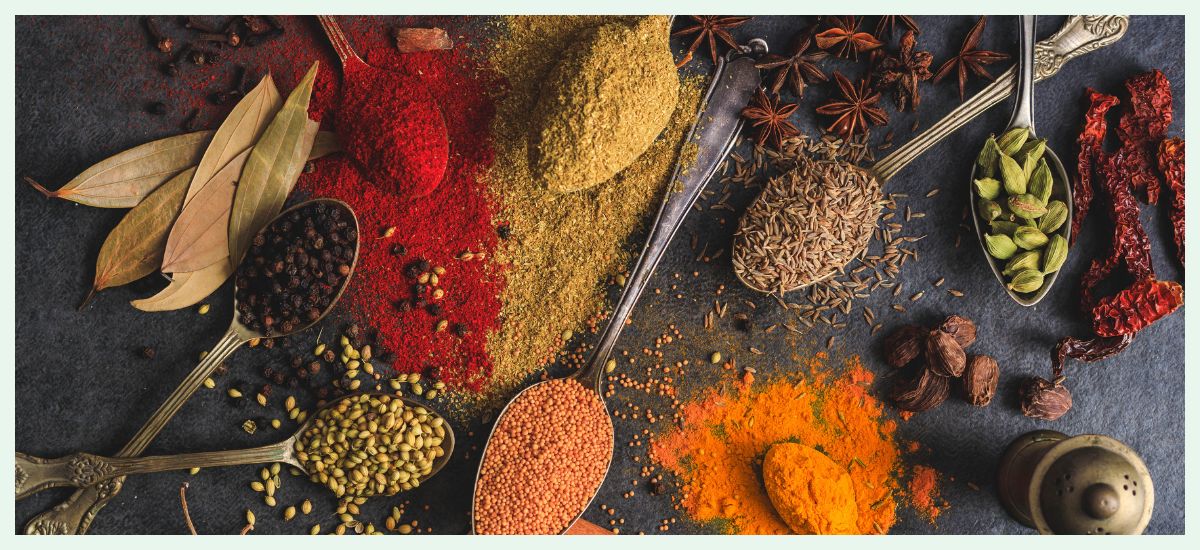Indian cuisine is one of the most diverse, flavorful, and naturally vegetarian-friendly food cultures in the world. From spiced lentil curries to crispy snacks and aromatic rice dishes, it offers a perfect blend of nutrition, taste, and sustainability.

In recent years, plant-based diets have gained immense popularity, with people shifting towards healthier and more sustainable food choices. If you’re wondering why Indian vegetarian food is the future, this blog will explore its health benefits, environmental impact, and why more people are embracing it worldwide.
1. The Global Rise of Vegetarian and Vegan Diets
More and more people are switching to plant-based diets, whether for health, ethical reasons, or environmental concerns. According to research, the demand for vegetarian and vegan food is growing rapidly, especially in Europe and the US. But why is this shift happening?
A. Health Consciousness
Many people are choosing vegetarian and vegan diets because they are linked to:
- Lower risk of heart disease
- Better digestion and gut health
- Reduced inflammation and improved immunity
- Sustainable weight management
B. Environmental Awareness
Switching to plant-based food has a lower carbon footprint, reduces water consumption, and helps fight deforestation. Studies show that a vegetarian diet can cut greenhouse gas emissions by nearly 50%!
C. Ethical & Animal Welfare Concerns
With growing awareness about animal cruelty in the food industry, people are choosing compassionate eating habits that do not harm animals.
2. Why Indian Vegetarian Food Stands Out
Indian cuisine has always been a leader in vegetarian and vegan food, making it one of the best options for those adopting a plant-based lifestyle. Unlike many other cuisines that rely heavily on meat, Indian food is naturally rich in vegetables, lentils, grains, and dairy alternatives.
A. A Rich Culinary Heritage
India has the largest vegetarian population in the world, thanks to centuries of religious and cultural traditions. Hinduism, Jainism, and Buddhism promote plant-based eating, making vegetarian food a core part of Indian culture.
B. Flavor-Packed, Not Bland
One of the biggest myths about vegetarian food is that it’s boring. But Indian cuisine proves otherwise! With an incredible mix of spices, textures, and cooking techniques, plant-based dishes can be just as exciting (if not more) than meat-based meals.
Some of the most loved vegetarian Indian dishes include:
- Paneer Butter Masala – A creamy tomato-based curry with soft paneer chunks.
- Dal Tadka – Lentils cooked with garlic, cumin, and turmeric for a comforting dish.
- Samosas & Pakoras – Crispy, spiced snacks that are perfect for any occasion.
3. The Science Behind Indian Spices: More Than Just Flavor
Indian food isn’t just tasty—it’s also packed with healing ingredients. Ayurvedic cooking has long emphasized spices for their medicinal benefits.

Here are some powerful spices used in Indian vegetarian cooking and their health benefits:
-
Turmeric – A natural anti-inflammatory, great for immunity and joint health.
-
Garlic & Ginger – Supports digestion and boosts heart health.
-
Cumin & Coriander – Aids digestion and improves metabolism.
-
Fenugreek – Helps regulate blood sugar and cholesterol.
These spices not only add depth to dishes but also promote better digestion, stronger immunity, and overall wellness.
4. Sustainability: How Indian Vegetarian Food Helps the Planet
A vegetarian diet is one of the most sustainable ways to eat, and Indian cuisine is a perfect example of how plant-based food can be both delicious and environmentally friendly.
A. Lower Carbon Footprint
Meat production is one of the leading contributors to climate change. By switching to plant-based food, we can:
- Reduce deforestation caused by animal farming.
- Save water resources—plant-based foods require far less water than meat.
- Cut down on greenhouse gas emissions.
B. Less Food Waste
Indian cooking uses whole ingredients efficiently—from vegetable peels in broths to leftover lentils turned into delicious parathas. Minimal waste, maximum flavor!
C. Farm-to-Table Eating
Traditional Indian meals often include fresh, locally sourced vegetables, grains, and legumes, making them an excellent farm-to-table choice for sustainability.
5. How to Add More Indian Vegetarian Food to Your Diet
If you’re new to Indian cuisine or looking to add more plant-based meals to your diet, here are sple ways to get started:
Try One Indian Meal Per Week – Swap one of your regular meals with an Indian curry, dal, or vegetable dish.
Explore Spices – Start using turmeric, cumin, coriander, and garam masala in your cooking.
Experiment with Legumes & Lentils – Replace meat with chickpeas, lentils, or kidney beans in your meals.
Order from Vegetarian-Friendly Restaurants – Look for Indian restaurants that serve authentic plant-based dishes.
Final Thoughts: The Future is Plant-Based!
As the world moves towards healthier, more sustainable food choices, Indian vegetarian cuisine is leading the way. With its rich flavors, diverse ingredients, and deep-rooted traditions, it’s clear that Indian plant-based food is not just a trend but the future of global dining.
If you’re looking to embrace a healthier lifestyle without sacrificing taste, visit HariMoksh Restaurant there Indian vegetarian food is the perfect choice !
Whether you’re embracing a plant-based lifestyle or simply exploring new flavors, Indian vegetarian food offers a rich, satisfying experience. Join us at HariMoksh for a flavorful journey that’s good for your health and your taste buds. Follow us on Instagram for daily food inspiration, and discover how FoodMato helps restaurants like ours grow online with ease.

